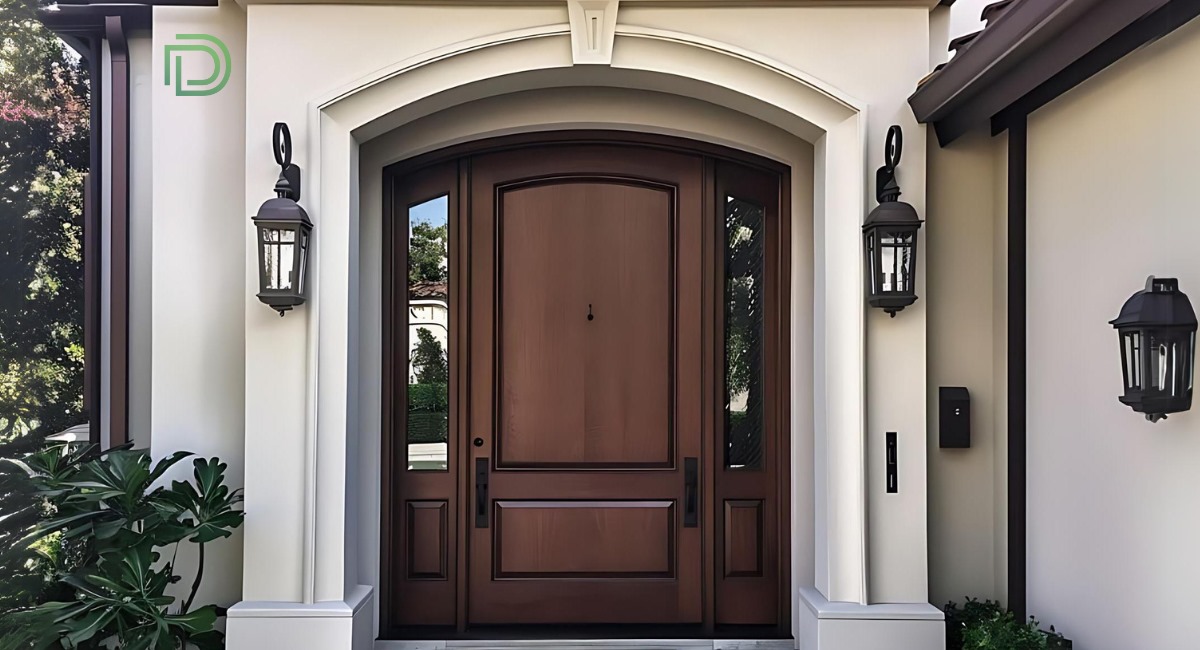Explore the dramatic evolution from timeless door designs to cutting-edge contemporary trends. This compelling narrative unveils how historic milestones, technological leaps, and evolving consumer preferences have revolutionized door aesthetics and functionality. By dissecting the sophisticated synthesis of traditional craftsmanship with modern innovations, we reveal the transformation of doors from mere functional barriers to integral elements of stunning home decor.
Classic Door Styles
Classic door styles have their roots deep in history, reflecting the architectural principles and cultural values of their times. From the grandiose wooden doors of medieval castles, adorned with iron studs and intricate carvings, to the elegant, paneled doors of Georgian and Victorian homes, these designs exude a timeless charm. Traditional craftsmanship played a crucial role, with artisans meticulously handcrafting each door to ensure durability and aesthetic appeal. The use of robust materials such as oak and mahogany was common, enhancing both the strength and grandeur of the doors. These classic styles not only served functional purposes but also symbolized status and security. As we trace the door design evolution, it becomes clear that these timeless designs laid the foundation for the modern door innovations we see today, blending form and function in a manner that continues to inspire contemporary door trends.
History of Door Design
The history of door design is as old as architecture itself, evolving in tandem with human civilization. Early door designs were simplistic, often made from animal hides or rudimentary wooden planks, primarily serving to protect inhabitants from external threats. As societies advanced, doors began to reflect the architectural styles and technological capabilities of their times. In ancient Egypt, doors were frequently constructed from stone, featuring elaborate carvings and inscriptions. The Greeks and Romans introduced more sophisticated wooden doors, often decorated with bronze and other metals. The Middle Ages saw the rise of fortified doors in castles and cathedrals, emphasizing durability and security. The Renaissance and subsequent periods brought a renewed focus on aesthetics, with doors becoming more ornate and integrated into the overall architectural harmony. This rich history of door design underscores the journey from basic functionality to the intricate blend of art and engineering that characterizes modern door innovations.
Traditional vs Modern Doors
The contrast between traditional and modern doors highlights the evolution of design philosophies over centuries. Traditional doors are often characterized by their use of rich, natural materials like wood and their intricate craftsmanship. They frequently feature ornate details, such as carvings, panels, and decorative hardware, reflecting the architectural styles of their respective periods. These doors were designed to convey a sense of permanence, security, and artistry.
In contrast, modern doors emphasize minimalism, functionality, and the use of innovative materials. Contemporary door trends often incorporate glass, steel, and composite materials, prioritizing clean lines and sleek aesthetics. Modern door innovations focus on energy efficiency, smart technology integration, and enhanced security features. While traditional doors celebrate historical craftsmanship and detailed ornamentation, modern doors embrace simplicity and cutting-edge technology. Despite these differences, both styles contribute significantly to the door design evolution, offering diverse options that cater to varying tastes and functional needs.
Modern Door Innovations
Contemporary door trends reflect a fusion of aesthetics and functionality, driven by advancements in technology and changing consumer preferences. Minimalist designs dominate the current landscape, with clean lines and understated elegance becoming the hallmark of modern door styles. Materials such as glass and steel are increasingly popular, lending a sleek and sophisticated look to home entryways. Additionally, energy efficiency has become a critical consideration, leading to the adoption of insulated doors that help regulate indoor temperatures and reduce energy costs.
Smart technology integration is another significant trend, with modern doors now offering features such as keyless entry, biometric locks, and remote access. These advancements enhance convenience and security, aligning with the contemporary lifestyle’s demands. Moreover, customization options have expanded, allowing homeowners to tailor door designs to their specific tastes and requirements. This blend of innovation and personalization ensures that contemporary door trends continue to shape the evolution of home entryways.
Door Functionality Advancements
Door functionality advancements have significantly transformed how we perceive and interact with doorways. Innovations in materials and technology have led to doors that not only look good but also offer superior performance and convenience. One of the most notable advancements is in the realm of security. Modern doors now come equipped with smart locks, biometric access, and surveillance integration, providing homeowners with enhanced safety and peace of mind.
Energy efficiency has also seen considerable improvements. Today’s doors often feature advanced insulation materials and weatherstripping technologies that help maintain indoor climate control, reducing energy costs and environmental impact. Additionally, the rise of automated doors, which can be controlled via smartphone apps or voice commands, adds a layer of convenience previously unimaginable.
These advancements in door functionality reflect a broader trend towards creating home entryways that are both aesthetically pleasing and highly practical, bridging the gap between traditional craftsmanship and modern technology.
Evolution of Home Entryways
The evolution of home entryways has been marked by a dynamic interplay of design, technology, and functionality. Historically, entryways served purely practical purposes, providing security and separating indoor spaces from the outside world. However, as architectural styles have evolved, so too have the designs and functionalities of entryways.
Today’s entryways are a statement of style and innovation. They often feature expansive glass panels that invite natural light, creating a welcoming ambiance while maintaining privacy through smart glass technologies. The integration of smart doorbells, security cameras, and motion sensors has revolutionized home security, offering real-time monitoring and alerts.
This blend of aesthetics and advanced functionalities showcases how entryways have transitioned from mere functional barriers to sophisticated, integral elements of modern home design, enhancing both curb appeal and practical utility.
Discover the perfect blend of classic and contemporary in Doorland’s extensive collection. Transform your entryway with our innovative designs that honor tradition while embracing the future. Visit Doorland today!

